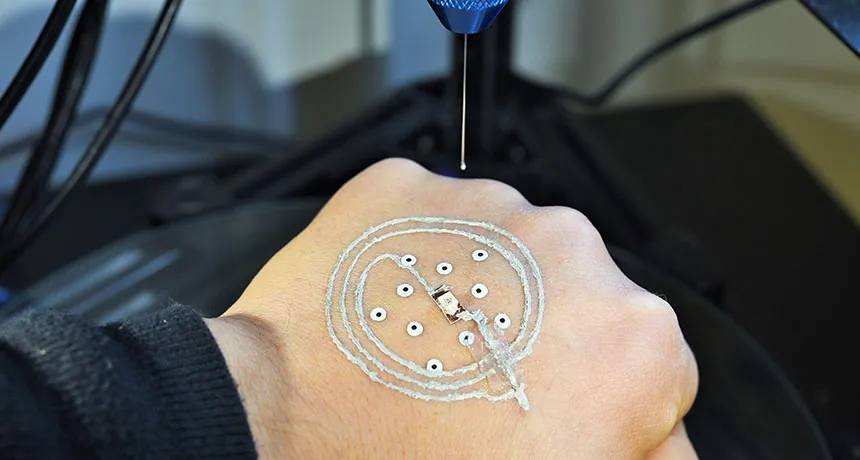A new 3-D printer builds temporary electronics on your skin
You won’t mess up the machine’s design, even if you twitch

ON HAND A new 3-D printer creates wireless, light-up devices (one shown) or health sensors directly on a person’s skin, like high-tech temporary tattoos.
McAlpine Group/University of Minnesota





